|
Wetland and Aquatic Plants
of
Oklahoma
Interactive Keys: Emergent
Grasslike
Sedges (Cyperaceae)
3. Bulrushes (Scrirpus spp. and Schoenoplectus
spp.)
Note: The
oblong sedge stem borer's (Archanara oblonga) can be found on
bulrushes. The seeds are favored by many
species of shorebird, waterfowl, and songbirds. The
rhizomes are eaten by geese and beavers. The
dense growth of several species provides
cover for many wildlife species.
a. Stems round
i. stems appear to project beyond inflorescence
ii. inflorescence project from end of stem
b. Stems triangle
Plants with round
stems
Stem appears to project beyond the inflorescence
Hardstem
bulrush (Schoenoplectus acutus
(Muhl. ex Bigelow) A.& D. L÷ve)
Native perennial
click on thumbnails to enlarge
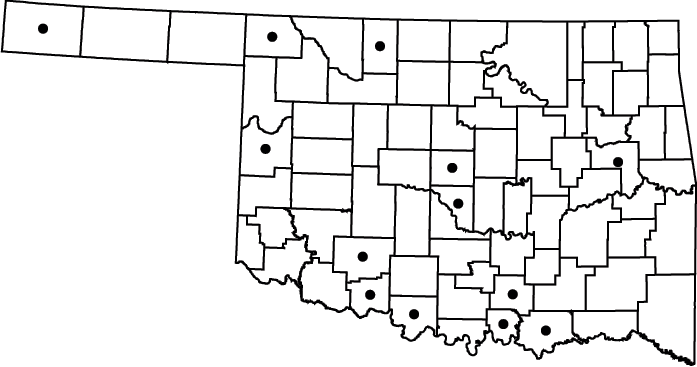
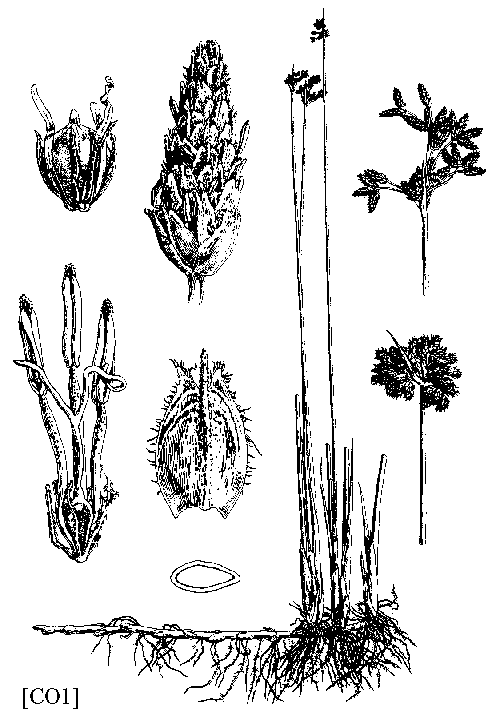
Note: The inner portion of the stem as eaten many
tribes,
including the Cheyenne. An important
source of fiber for weaving.
NWI status:
OBL
California
bulrush (Schoenoplectus
californicus (C.A. Mey.) Palla)
Native perennial.
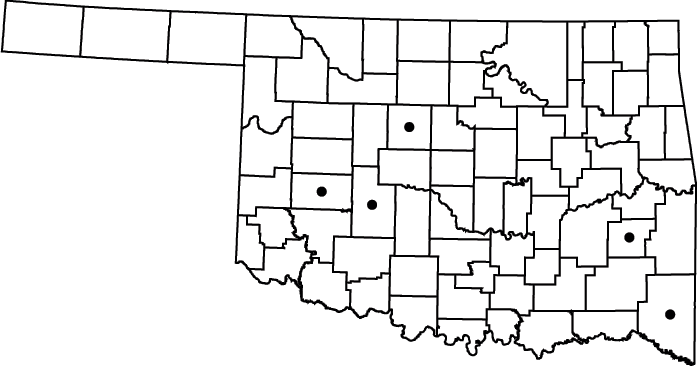
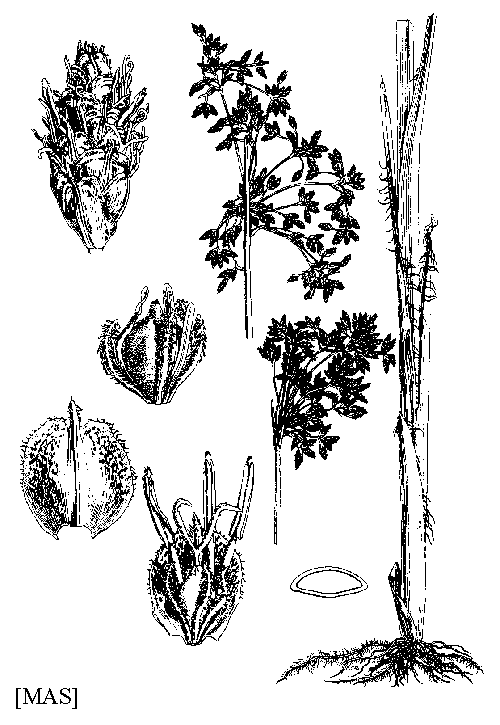
Note: An important source of fiber for weaving.
NWI status:
OBL
Hall's
bulrush (Schoenoplectus hallii
(Gray) S.G. Sm.)
Native perennial.
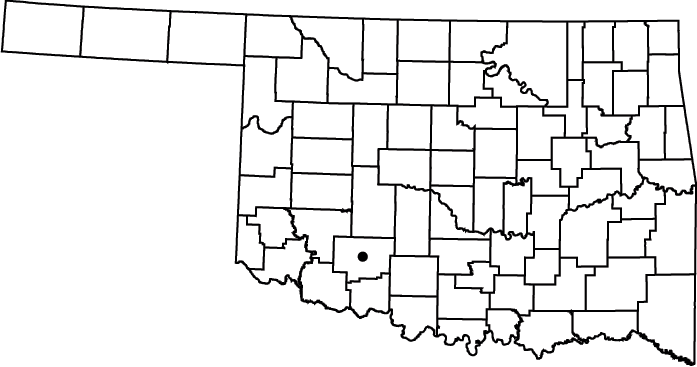
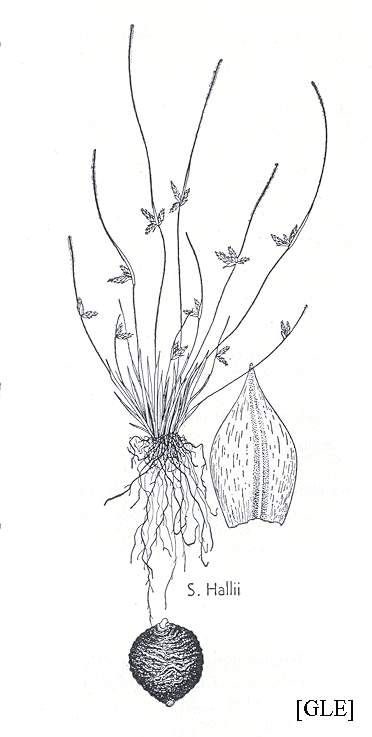
Note: A small species which grows primarily on
drawdown
areas along lake margins. Hall’s
bulrush is rare and known from only a limited number of sites.
NWI status:
OBL
Rocky
Mountain bulrush (Schoenoplectus
saximontanus (Fern.)
Raynal)
Native perennial.
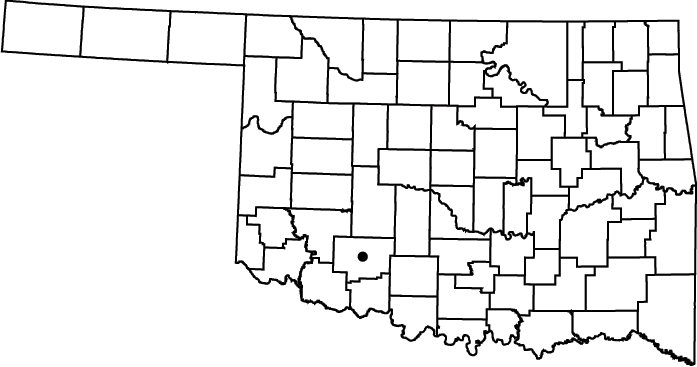
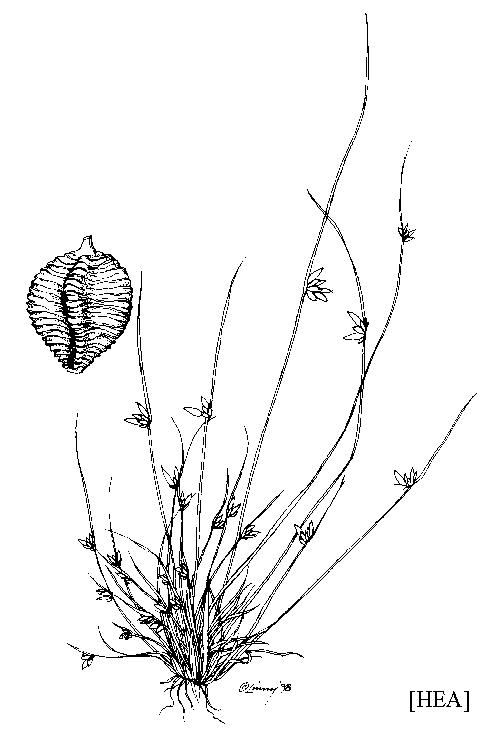
Note: A small species which grows primarily on
drawdown
areas along lake margins. Very similar
in appearance to Hall’s bulrush. The
achenes of Rocky Mountain bulrush are triangular shaped, whereas the
achenes of
Hall’s bulrush are two-sided (lenticular). An
uncommon species.
NWI status:
OBL
Softstem
bulrush (Schoenoplectus
tabernaemontani (K.C.
Gmel.) Palla)
Native perennial.
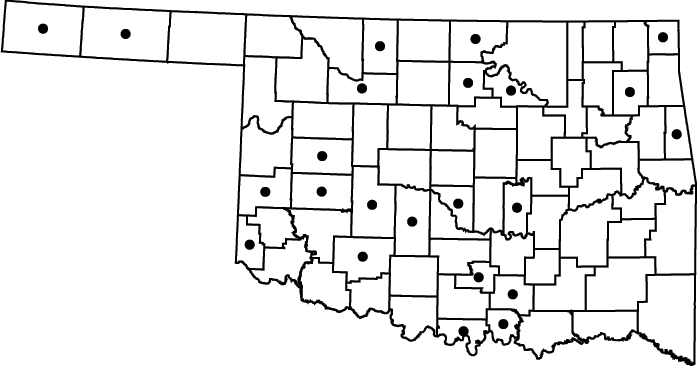
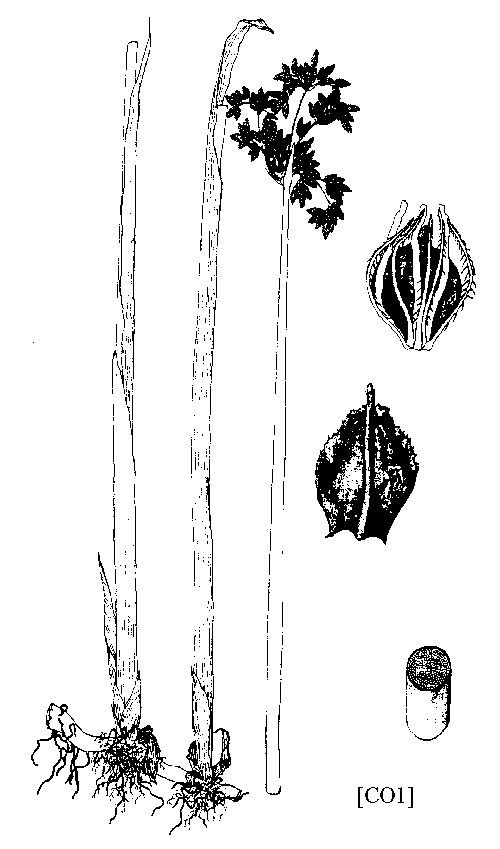
Note:
A very common
species throughout Oklahoma. A short-lived
perennial that grows in dense
clumps. Used by the Cherokee to induce
vomiting. An important fiber plant for
many tribes, including the Pawnee, Ponca, and Potawatomie.
NWI status:
OBL
Inflorescence
projects from the end of the stem
Green
bulrush (Scirpus atrovirens Willd.)
Native perennial.
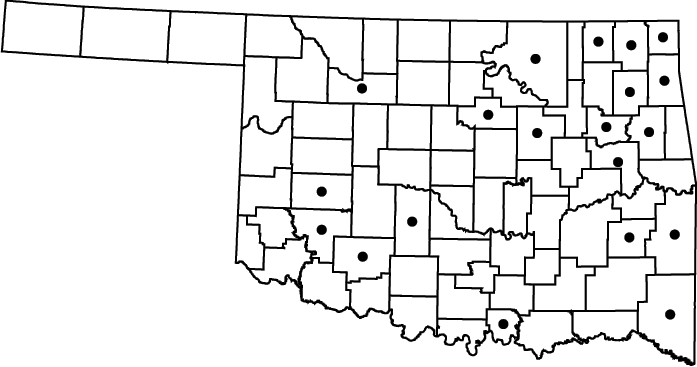
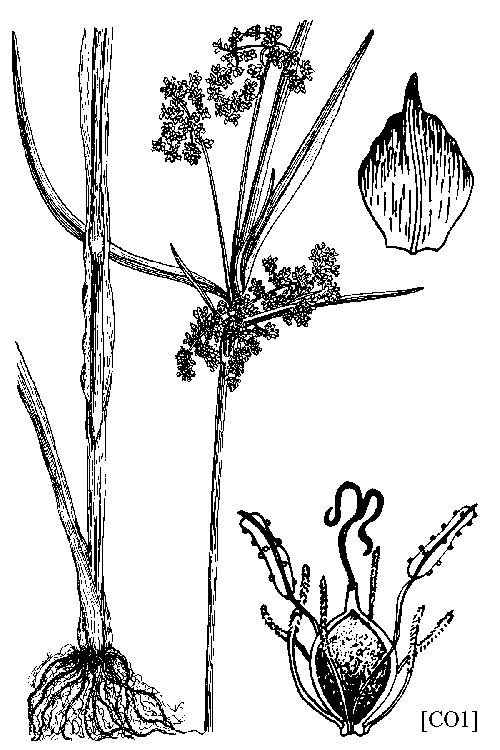
Note:
The inflorescence
is densely clustered. A fairly common
sedge in eastern Oklahoma.
NWI status:
OBL
Woolgrass
(Scirpus
cyperinus (L.)
Kunth)
Native perennial.
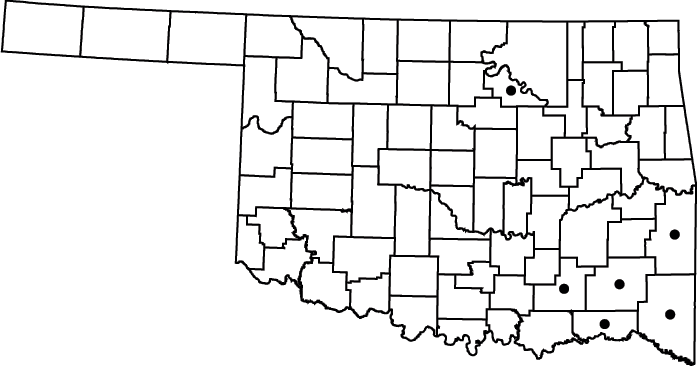
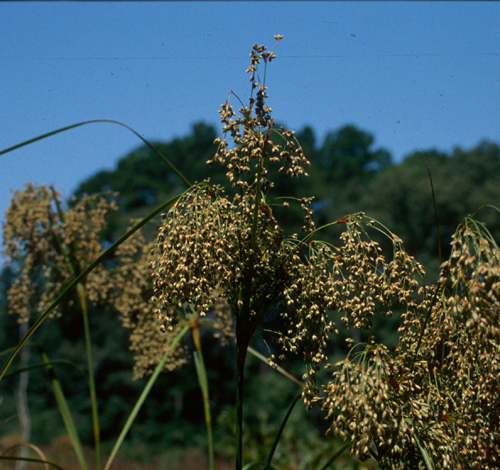
Note: A beautiful, large, robust species that
grows in
marshes and swamps in southeastern Oklaoma. A
larval food plant for some moth species.
NWI status:
OBL
Slender
bulrush (Schoenoplectus
heterochaetus
(Chase) Soják)
Native perennial.
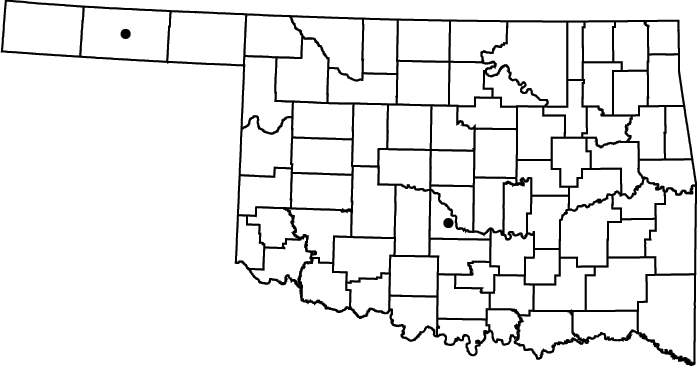
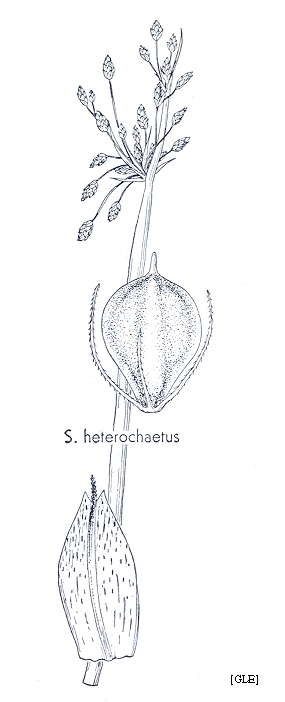
Note: Slender, drooping, and rufous bulrushes are
similar
in appearance. Although trying, it is
best to compare the small bristles that extend from the base of the
seed
(achene).
NWI status:
OBL
Drooping
bulrush (Scirpus
lineatus
Michx.)
Native perennial.
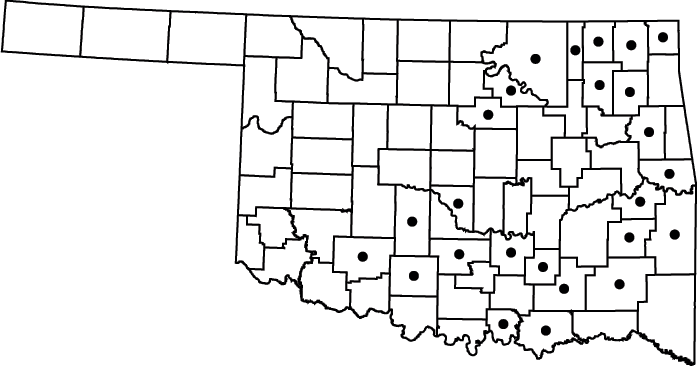
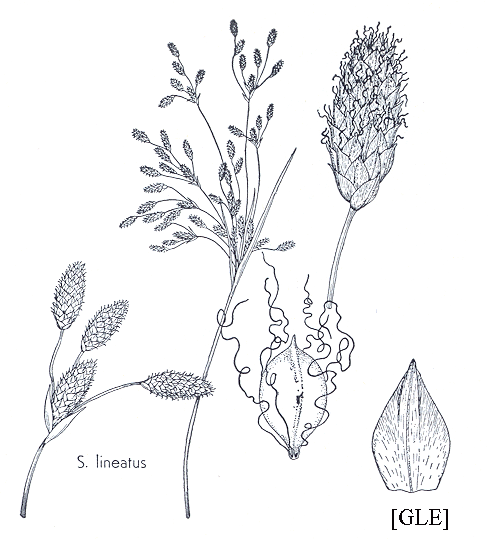
NWI status:
OBL
Rufous
bulrush (Scirpus
pendulus
Muhl.)
Native perennial.
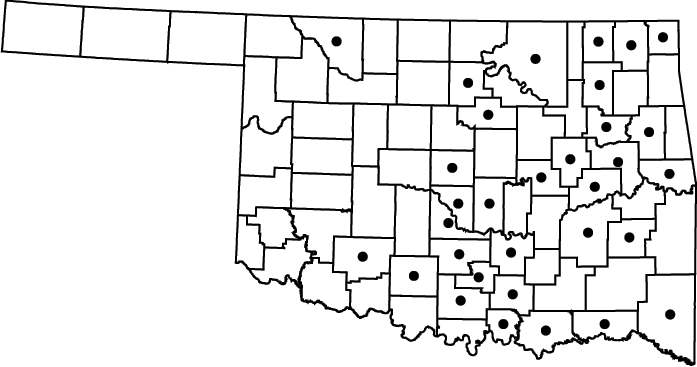
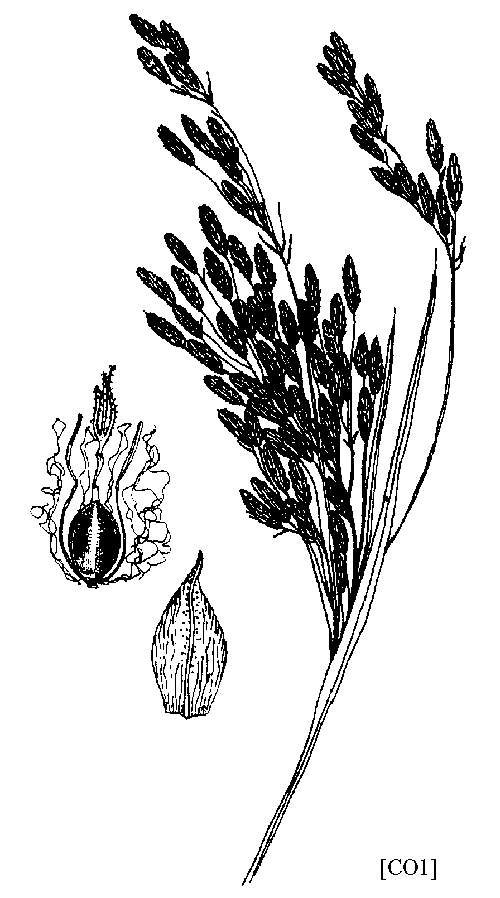
NWI status:
OBL
Plants
with triangle stems
Chairmaker's
or American bulrush (Schoenoplectus
americanus (Pers.) Volk.
ex Schinz & R. Keller)
Native
perennial.
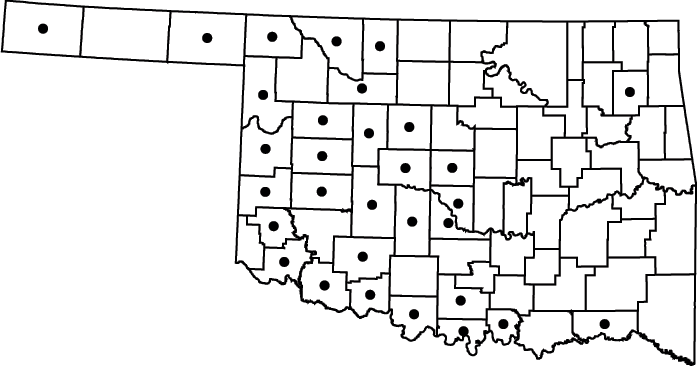
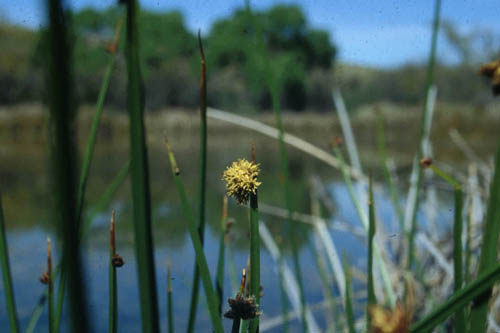
Note: Although this species can be found
throughout
Oklahoma, it is most common in western Oklahoma. It
can be found growing along stream and lake margins.
It is tolerant of salty water. An important
source of fiber for weaving.
NWI status:
OBL
Bulrush
(Schoenoplectus
maritimus (L.)
Lye)
Native perennial.
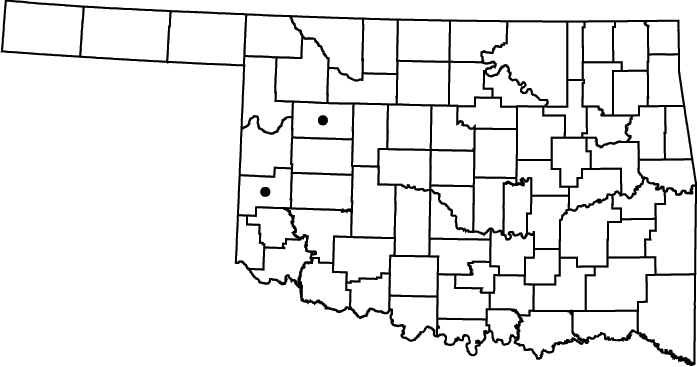
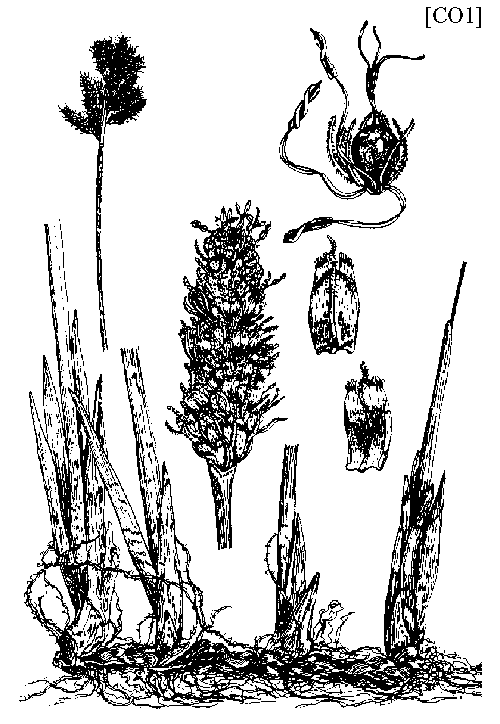
Note: Common in western Oklahoma.
Seem to prefer saline streams.
NWI status:
OBL
Last update: 2/23/04
Comments to : Bruce Hoagland
bhoagland@ou.edu
Go to Oklahoma
Biological Survey Home Page
 Disclaimer Disclaimer
|

